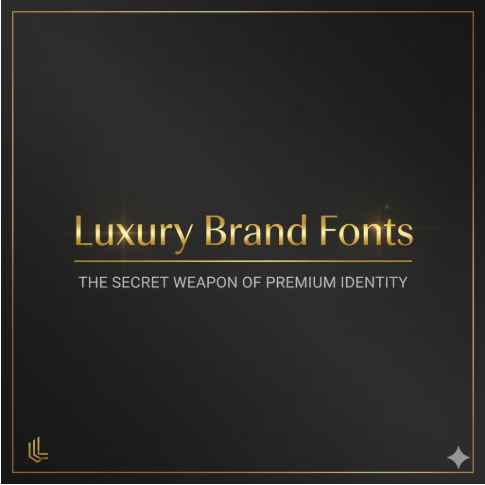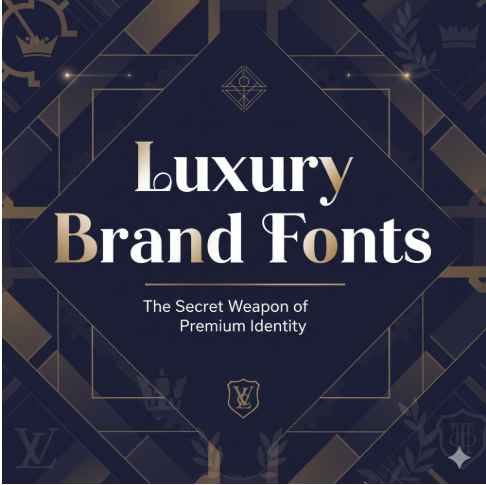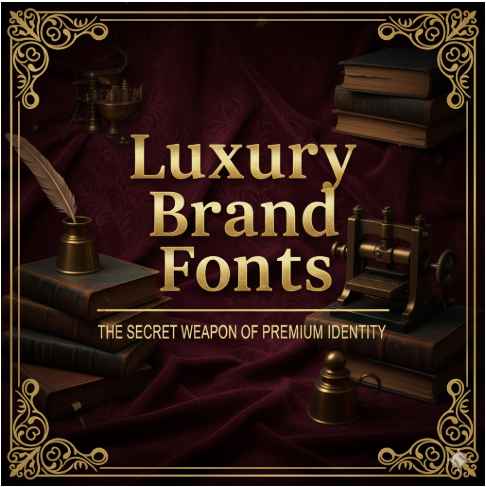Table of Contents
- Introduction: Why Typography Matters in Luxury Branding
- Defining “Luxury Brand Fonts”
- Key Traits of Luxury Fonts
- How Top Luxury Brands Use Typography (With Examples)
- Tips to Design or Choose Luxury Fonts
- Using Your Own Fonts: RaisProject’s Examples
- SEO & Marketing Benefits of Luxury Fonts
- Conclusion & Next Steps
1. Introduction: Why Typography Matters in Luxury Branding
Luxury brand fonts are more than just stylish letters—they are powerful tools that shape how premium brands communicate exclusivity, elegance, and timeless identity. From fashion houses to high-end cosmetics, typography plays a central role in defining luxury. The choice of typeface is not just aesthetic; it becomes part of the narrative. A poorly chosen font can cheapen an otherwise high-quality brand.
Luxury consumers often respond subconsciously to visual cues. The font you use can signal tradition, heritage, uniqueness, or modern sophistication. In an era where many brands blur together (the “blanding” effect), distinctive typography helps you stand out.
I’ll walk you through what makes a “luxury brand font,” how to apply it, and show how our own fonts (from RaisProject) can serve as assets for premium branding.

2. Defining Luxury Brand Fonts
So what qualifies as a “luxury brand font”? Here are some characteristics and “mental models” to think about:
- It often carries elegance, refinement, and restraint.
- It can be serif, modern serif (Didone), elegant sans serif, or even a tailored script, but must feel purposeful.
- It should support good readability at display sizes (e.g., logos, headlines) but still carry personality in brand collateral and small text.
- It usually avoids overly decorative or gimmicky forms (unless for accent) and focuses on subtlety, balance, and fine details.
In design trends 2025, heritage-inspired typography is resurging—brands are returning to classic forms to signal authenticity and legacy. Designity
Monotype also studied how fashion and luxury brands use fonts to differentiate themselves; for those premium houses, typography is carefully curated. Monotype
3. Key Traits of Luxury Brand Fonts
Below are the common traits seen in fonts that feel luxurious:
| Trait | What It Means / Why It Matters |
|---|---|
| High contrast in stroke weights | Gives dramatic flair (think Didone styles like Bodoni) Wikipedia |
| Elegant serifs or fine terminals | Implies craftsmanship, control, calligraphic lineage |
| Well-proportioned spacing & kerning | Prevents awkward gaps; maintains visual harmony |
| Subtle letter details (flared serifs, tapered strokes) | Adds uniqueness and signature touch |
| Versatility across weights / optical sizes | So that the font works both big (logo) and small (body) |
| Good legibility even with flair | Especially important in brand materials or digital media |
A classic example is Bodoni, which is often used in high-end magazines and branding for its dramatic contrast and clean lines. Wikipedia
Also, many curated font libraries label fonts as “luxury” to help designers find those elevated styles. Adobe Fonts+1
4. How Top Brands Use Luxury Brand Fonts
Let’s look at some real-world examples:
- Dior recently revived a historic typographic style, reintroducing classic letterforms to reconnect with heritage. Vanity Fair
- Fashion brands often combine modern sans serif for body text with a serif or custom display for logos, creating contrast and hierarchy. Monotype
- Many luxury brands avoid overused geometric sans fonts; they instead lean into bespoke, custom typefaces.
These brands use typography as more than just text—it becomes a signature, an identifier. Think of the way you instantly “sense” Chanel, Prada, or Gucci without even reading.
5. Tips to Design or Choose Luxury Brand Fonts
If you or your clients want to design or select a luxury font, consider:
- Start with concept / brand values
– Is the brand heritage, modern, artistic, or minimal?
– Let that guide the tone: classic serif vs elegant sans vs refined script. - Draw inspiration from classic letterforms
– Study Didone styles (Bodoni, Didot), transitional serifs, or high-contrast contemporary serifs.
– Also explore elegant sans serifs with subtle quirks. - Pay attention to spacing, kerning, and proportions
– Many fonts look acceptable at large sizes but fall apart at smaller scales.
– Always test in realistic mockups (packaging, signage, web). - Offer multiple weights / optical sizes
– A “display” version optimized for large sizes and a “text” version for small use. - Inject unique touches
– Ligatures, alternate glyphs, elegant swashes (if appropriate), or bespoke terminals can elevate a font from “nice” to “signature.” - Ensure multilingual support & technical robustness
– Luxury brands often go global, so support for diacritics, extended character sets, and proper hinting matters. - Pair wisely
– If the logo font is dramatic, the body font must balance — usually a more neutral serif or sans.

6. Using Your Own Fonts: RaisProject’s Examples
Below are examples from your catalog that could align (or be adapted) for luxury branding. You can link these in the blog so readers can click through as case studies:
- I Am Beautiful Font (RaisProject)
- Break Sucker Font (RaisProject)
- Dariena Floralie Font (RaisProject)
How They Can Work
- I Am Beautiful Font: Depending on its form, it may suit elegant feminine luxury branding (beauty, jewelry, boutique).
- Dariena Floralie: Floral or decorative fonts can work for accent or logo use, especially in luxury wedding, perfume, or boutique niches.
- Break Sucker: Might be more expressive / edgy — could suit luxury streetwear / fashion that blends bold branding with premium feel.
You can use these fonts in blog mockups: logo → business card → packaging → web header, to illustrate how a luxury brand identity can be built from your product offerings.
7. SEO & Marketing Benefits of Luxury Fonts
Using and promoting luxury brand fonts gives you not just design advantage—but marketing and SEO upside:
- Brand differentiation: Unique typography helps your brand stand apart and be more memorable.
- Higher perceived value: Premium fonts can subconsciously make your products feel more expensive or collectible.
- Content marketing opportunities: You can write case studies, tutorials, and showcases about these fonts (as you’re doing now), driving organic traffic on “luxury font,” “premium typography” topics.
- Backlink & authority potential: If you reference design articles, studies, or authoritative sources (like Monotype, design trend blogs) and others cite your blog, your site’s domain authority improves.
- Conversion impact: A cohesive luxury look can increase trust and reduce friction in purchase decisions.
8. Conclusion & Next Steps
Typography is more than support—it’s a vehicle of brand emotion. For luxury brands, fonts become intangible ambassadors. By mastering “luxury brand fonts,” you and your team can create identities that resonate deeply, command respect, and convert better.

